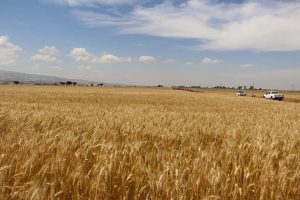ESSP Working Paper 120, by Michael L. Mann, James M. Warner, and Arun S. Malik.
Abstract: Timely and accurate agricultural impact assessments for droughts are critical for designing appropriate interventions and policy. These assessments are often ad hoc, late, or spatially imprecise, with reporting at the zonal or regional level. This is problematic as we find substantial variability in losses at the village-level that are missing when reporting even at the zonal level. In this paper we propose a new data fusion method combining remotely-sensed data with agricultural survey data that might address these limitations. We apply the method to Ethiopia, which is regularly hit by droughts and is a substantial recipient of ad hoc imported food aid. We then utilize remotely-sensed data obtained near mid-season to predict substantial crop losses of greater than or equal to 25 percent due to drought at the village level for five primary cereal crops. We train machine learning models to predict the likelihood of losses and explore the most influential variables. On independent samples, the models identify substantial drought loss cases with up to 70 percent accuracy by mid- to late-September. We believe the proposed models could be used to help monitor and predict yields for disaster response teams and policy makers, particularly with further development of the models and integration of newly available high resolution remotely-sensed data, such as the Harmonized Landsat Sentinel (HLS) data set. Download the PDF.
